Georgios Panagopoulos MD | Orthopaedic Surgeon

Rotator cuff tears usually involve the supraspinatus tendon. Tears can be acute or chronic, partial or full-thickness. Pain and inability to lift the arm overhead are the most common symptoms. If conservative treatment fails, arthroscopy can address the problem.
Table of contents
What is the rotator cuff?
The rotator cuff is a group of muscles and tendons that surround the shoulder joint, keeping the ball (head) of the humerus (upper arm bone) firmly within the shallow socket of the shoulder blade (glenoid). Further than keeping the ball in the socket, the cuff muscles help lift and rotate the arm. A rotator cuff tear is one of the most common causes of shoulder pain. The supraspinatus muscle is the one typically involved, followed by the infraspinatus, and the subscapularis muscle. A tear can be either complete (full-thickness), or partial.
What causes a rotator cuff tear?
Rotator cuff tears occur when tendons pull away from the arm bone. A tear may result from overuse/chronic wear & tear, or from an acute injury. Tears are common and increase with age. Tears of the rotator cuff may be incomplete (partial tears) or incomplete (full-thickness tears). Anyone can experience a rotator cuff tear, but people over 40 are more at risk. Tears can be caused by an injury to the shoulder, i.e., associated with a dislocated shoulder. However, most tears are so-called degenerative, due to chronic wear & tear. Bone spurs rubbing on the tendon (impingement syndrome) may eventually lead to a full-thickness tear. Also, repetitive use of the shoulder on the job or during sports may contribute.
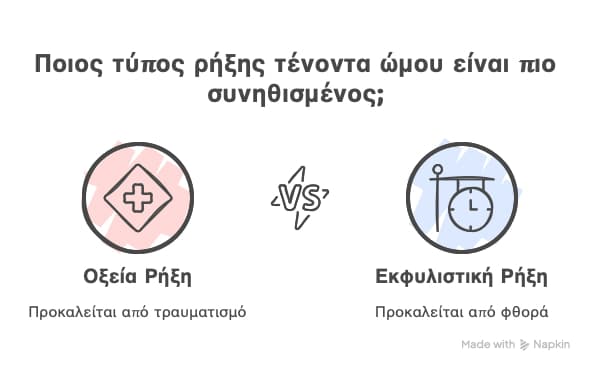

What are the symptoms of a rotator cuff tear?
Symptoms usually develop gradually over weeks or months. The symptoms of impingement syndrome may include:
- Pain and weakness while raising your arm overhead
- Pain when lying on your arm
- Pain that worsens at night and disturbs your sleep
- Pain when lifting your arm overhead to reach something (i.e., from the cupboard)
- Difficulty performing activities of daily living
Partial & full-thickness tears often present with similar symptoms & treatment options are similar.
Diagnosis
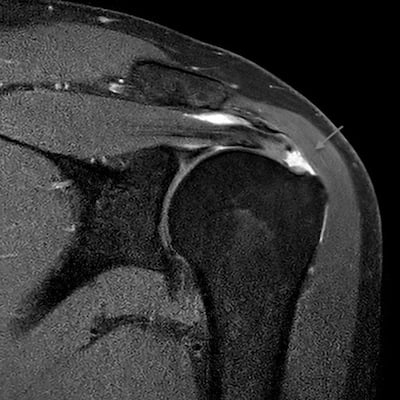
Dr Panagopoulos will take a full history and perform a detailed physical exam, including measuring range of motion and strength. An x-ray will be ordered to look for arthritis or calcific tendonitis. An ultrasound in the office will be performed to look for tears. An MRI may be ordered to further clarify your anatomy and the extent of the damage, like tear size or degree of muscle atrophy.
Conservative treatment
Conservative treatment of rotator cuff tears includes:
- Rest
- Activity modification
- NSAIDS
- Nonsteroidal anti-inflammatory drugs (NSAIDs)
- Physiotherapy/home exercise program for strengthening and stretching exercises
- Steroid injection in the joint
Rotator cuff tears do not heal on their own without surgery. However, many patients can improve functionally and have less pain by strengthening their shoulder muscles (deltoid strengthening, in particular). If symptoms fail to improve with non operative measures, the next option is surgery, with shoulder arthroscopy.
Surgical Treatment
Surgery is generally recommended if you have a full tear or your tear failed to respond to a 3-month trial of conservative management, including physiotherapy and injections. Most cuff surgeries can be performed arthroscopically. Dr Panagopoulos performs shoulder arthroscopy through 3 small incisions (4mm), through which he inserts a small camera and a variety of instruments. The bone spurs are trimmed, and the torn tendon is repaired to its anatomical position (footprint). Any other pathology encountered (biceps lesions, ACJ arthritis, etc.), is also addressed.
This is a day procedure. It is performed under general +/- regional anesthetic. You can go home the same day if you wish, just a few hours after the procedure.
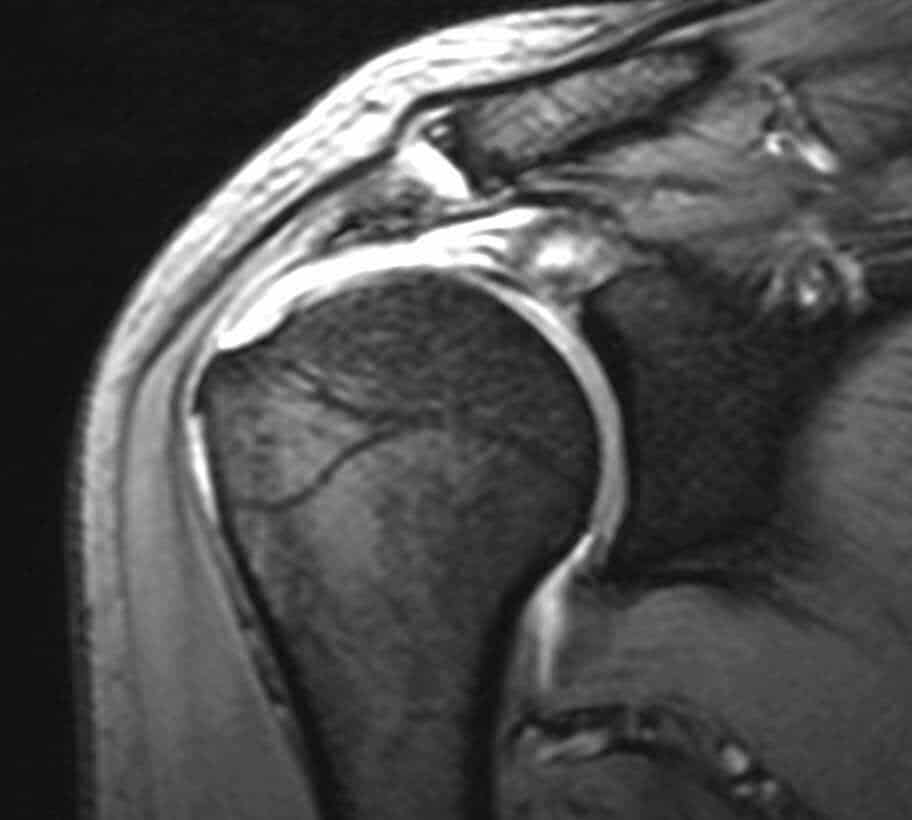
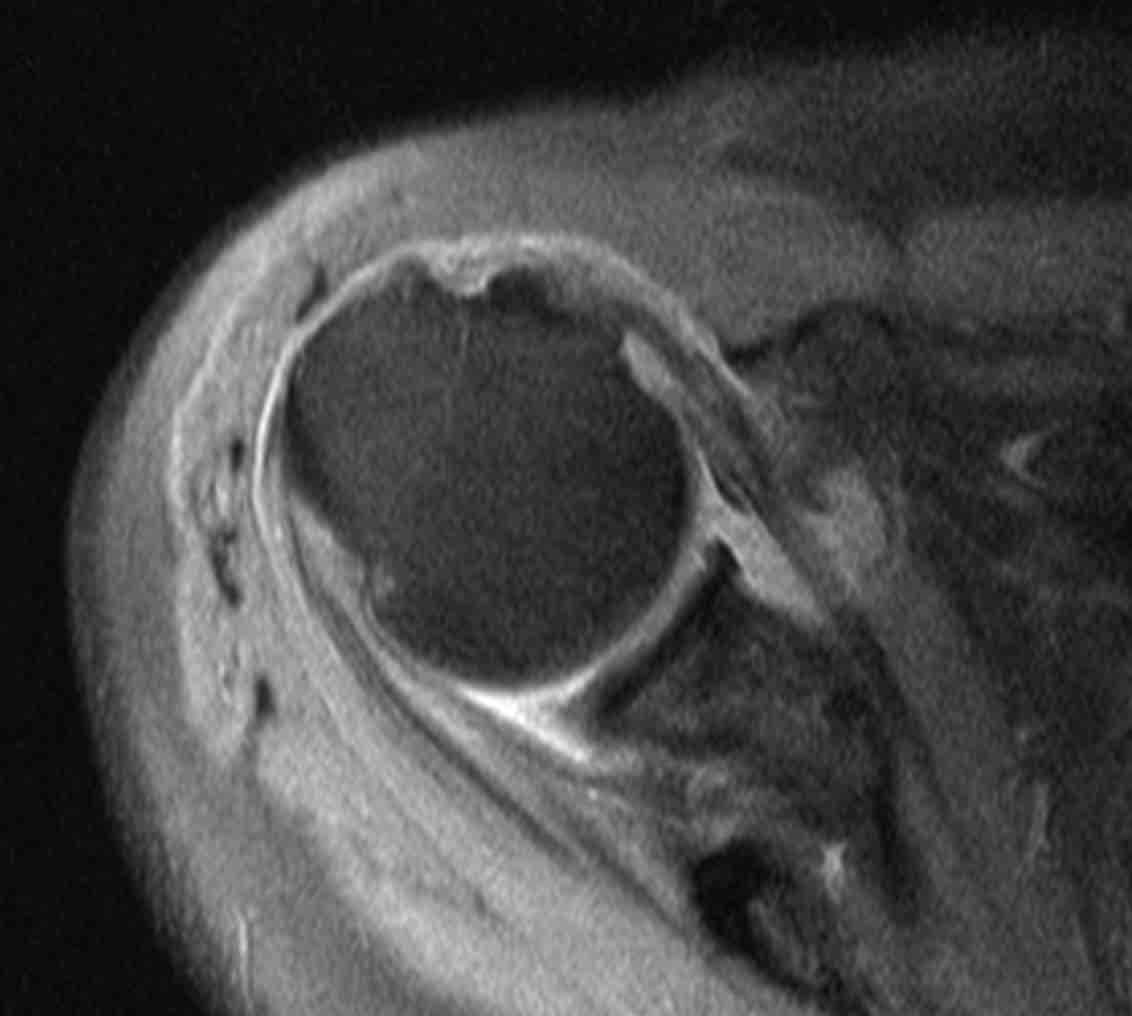
During arthroscopy, a camera is inserted in the joint, in order to diagnose and treat any potential pain generators. This might include shaving off part of the shoulder blade (acromioplasty) and the collarbone (ACJ excision) to create a bit more space, fixing a diseased long head of the biceps tendon (biceps tenodesis or tenotomy) and fixing a rotator cuff tear with suture anchors.
Your arm will stay in a sling for 4 to 6 weeks after the procedure based on the size of the tear. Then you will start physiotherapy. Most patients regain shoulder motion within 3 months and strength within 6 months, but full recovery may take up to a year.
Recovery
Physiotherapy after shoulder arthroscopy is essential. Exercises are meant to restore your range of motion first, followed by strengthening. Rehab time depends to a degree to the size of the cuff tear that was repaired (small-medium-large). Time in the sling varies from 3 to 6 weeks. Physiotherapy then begins with goals set as above.
Exercise program
A specialised physiotherapist will follow our patients postoperatively, initiating an individualised rehabilitation protocol, based on patient needs and underlying pathology addressed. Exercise programs initially include active - assisted, passive & finally active exercises with resistance. Main goal is obtaining a full range of motion and regaining strength, ultimately returning in the pre-injury levels of activity.


Some tears are not repairable due to their size (massive tears), or due to poor quality of the tissue. These are the so-called irreparable tears. Those tears may necessitate another procedure, such as debridement of scar tissue without repair, a tendon transfer, or a reverse shoulder replacement.
Reverse shoulder arthroplasty is indicated in the following occurences:
- Massive rotator cuff tears, thus tears deemed non repairable due to poor tissue quality or established tissue atrophy.
- Cuff arthropathy, thus cases with established arthritis.
- Failed rotator cuff repairs, when prior arthroscopy has failed.
- In older patients, not deemed good candidates for arthroscopy due to the prolonged recovery process.
Shoulder pain may be related to a rotator cuff tear, especially following a specific traumatic event. If you experience shoulder pain, it is important to see an expert shoulder surgeon.
Dr Panagopoulos will discuss with you all alternative treatment options during your office visit.
FAQs - Frequently Asked Questions
Which are the rotator cuff tendons?

– Supraspinatus
– Infraspinatus
– Subscapularis
– Teres minor
What are the types of rotator cuff tears?
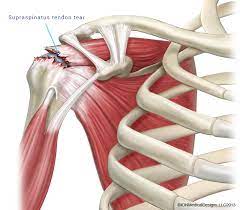
Rotator cuff tears can be:
– Acute tears (cuff tear), after an acute injury
– Chronic tears (cuff wear), degenerative – a result of wear & tear
When does a cuff tear need surgery?
Shoulder arthroscopy is indicated for:
– Most acute tears, thus after an acute injury
– Chronic degenerative tears that have failed conservative treatment (PT & injection)
Who are cuff tears diagnosed?
– History & clinical exam
– X-rays
– Ultrasound
– MRI
How is surgery done?
Shoulder arthroscopy is the best surgical option in most cases. This is done in a minimally invasive fashion, through small keyholes. It offers greater accuracy, less complications, and faster recovery.
What does rehab involve?
After arthroscopy, the arm is placed in a sling for 3-6 weeks, based on the size of the tear that has been repaired. Physiotherapy and patient compliance are crucial for a fast recovery.
Find us
Book an appointment with us today
